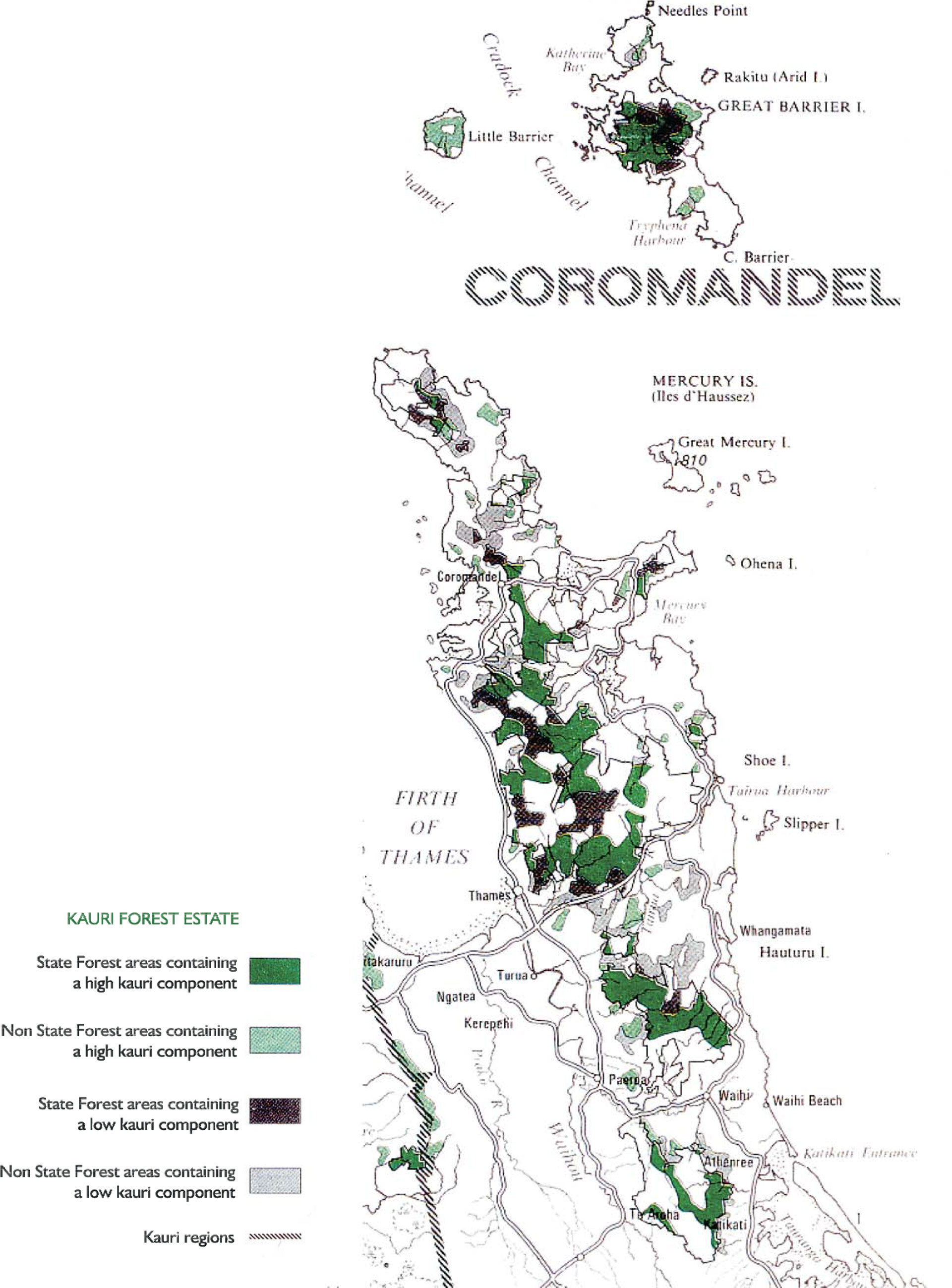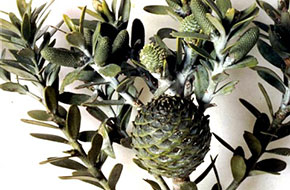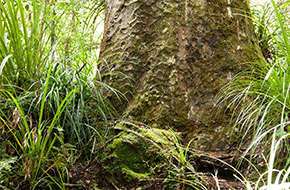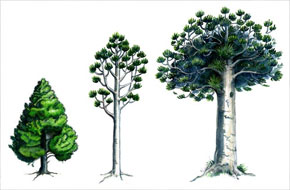Kauri Distribution

Botanical Details

Foliage
Kauri male and female cones Kauri leaves have no petioles and are arranged alternately. They are thick and leathery with parallel veins and are dull olive-green colour. Juvenile leaves are 5-10 x 0.5-1.2cm; Adult leaves are 2.0-3.5 cm long. Most leaves remain on the...

Kauri Growth
Trees normally reach a height of 30m -- occasionally 60m -- with a normal trunk diameter of three metres, sometimes reaching seven metres. As a young tree (known as a ricker) the kauri has a narrow, conical shape with branches up the length of the trunk. As the tree...

Botanical Details
The Kauri, Agathis australis, is New Zealand's largest and most famous native tree, on account of its size and age. It is regarded worldwide as a truly noble tree. Ancestors of the kauri first appeared in the Jurassic Period 190-135 million years ago. Kauri - podocarp...
